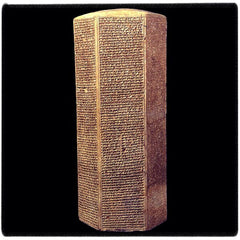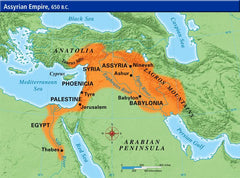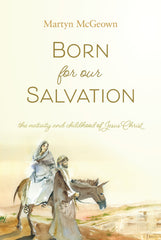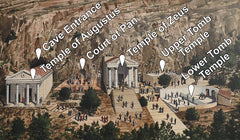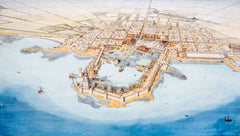Your cart is empty now.

Book review: "This book's strength lies in the author’s applications"

Sarah Mowery is the children's book reviewer for the magazine Perspectives in Covenant Education. She is a wife and mother and attends Loveland Protestant Reformed Church in Loveland, Colorado.
__________
Jehovah’s Mighty Acts, the newest RFPA children’s publication (to be released August 2019), is the first in a series by Rev. Nathan Langerak entitled Tell His Wonders. In thirty-one chapters (one hundred pages) Rev. Langerak surveys Old Testament history from Genesis through Esther. The book’s target age is 7–10 years, but the superb, original color illustrations by Michael Welply, illustrator of The Random House Book of Bible Stories, will intrigue children much younger (as well as adults).
The book is a survey of Old Testament history. The author notes in the preface that he selected “some of the foundational saving acts of God revealed in the Old Testament.” Because the book is intentionally thematic, certain stories that dominate other children’s Bible storybooks don’t even appear. For example, Joseph’s life is covered in one brief paragraph. Neither Jonah nor Daniel is mentioned. And besides David and Solomon, the only Israelite kings cited by name are Jeroboam, Ahaz, Hezekiah, Josiah, Jehoahaz, Jehoiakim, Jehoiachin, and Zedekiah. Because of that, it won’t replace the more exhaustive Bible storybooks that I use to teach my young children Bible history. However, it’s an excellent supplement. Its strength lies in the author’s applications, all of which are characterized by hope. Here’s the way he concludes chapter 23, “David’s Sin,” in which he honestly yet appropriately relates David’s lamentable fall in the matter of Uriah the Hittite (a story that’s regularly excluded from other Bible storybooks): “God forgives our sins too—even great and terrible sins like David’s. He gave his precious lamb Jesus Christ to cover them all with his blood, and that is one of the most wonderful of all God’s wonders. That is our salvation.”
Several times I was struck by Rev. Langerak’s use of metaphor and language and by his recounting of biblical events. This passage struck me as especially beautiful: “God never let the Israelites get lost in the wilderness. He was always with them in the great pillar of cloud by day and in the pillar of fire by night. God was shade for the hot days and he was light for the dark, cold nights.” However, I found his description of the “snake inside” the snake that “walked into paradise” potentially confusing, especially for children. Also, chapter 12 is entitled “Moses, Israel’s Savior.” I would have preferred a title that designated Moses as “a picture of Jesus our Savior,” as the author states at the chapter’s conclusion (emphasis added). I was also surprised by the statement that the physical rock that Moses struck at Horeb (Sinai) followed Israel. Commentator Matthew Henry agrees with that interpretation. Calvin, on the other hand, insists in his commentary on 1 Corinthians 10:4 that it is “abundantly manifest, that by the word rock is meant the stream of water, which never ceased to accompany the people,” and Barnes concurs with Calvin. That’s a detail I’d never really considered, much less studied before. I’d always accepted Mrs. Gertrude Hoeksema’s interpretation that God supplied his people with water from various rocks throughout their wilderness wanderings. But I was compelled by this Bible storybook to open God’s word and multiple Bible commentaries, and, in the end, wonder anew at mighty acts of Jehovah. And that just might be the highest compliment one can pay to any book.
The content of the article above is the sole responsibility of the article author. This article does not necessarily reflect the opinions and beliefs of the Reformed Free Publishing staff or Association, and the article author does not speak for the RFPA.

Donate
Your contributions make it possible for us to reach Christians in more markets and more lands around the world than ever before.
Select Frequency
Enter Amount



